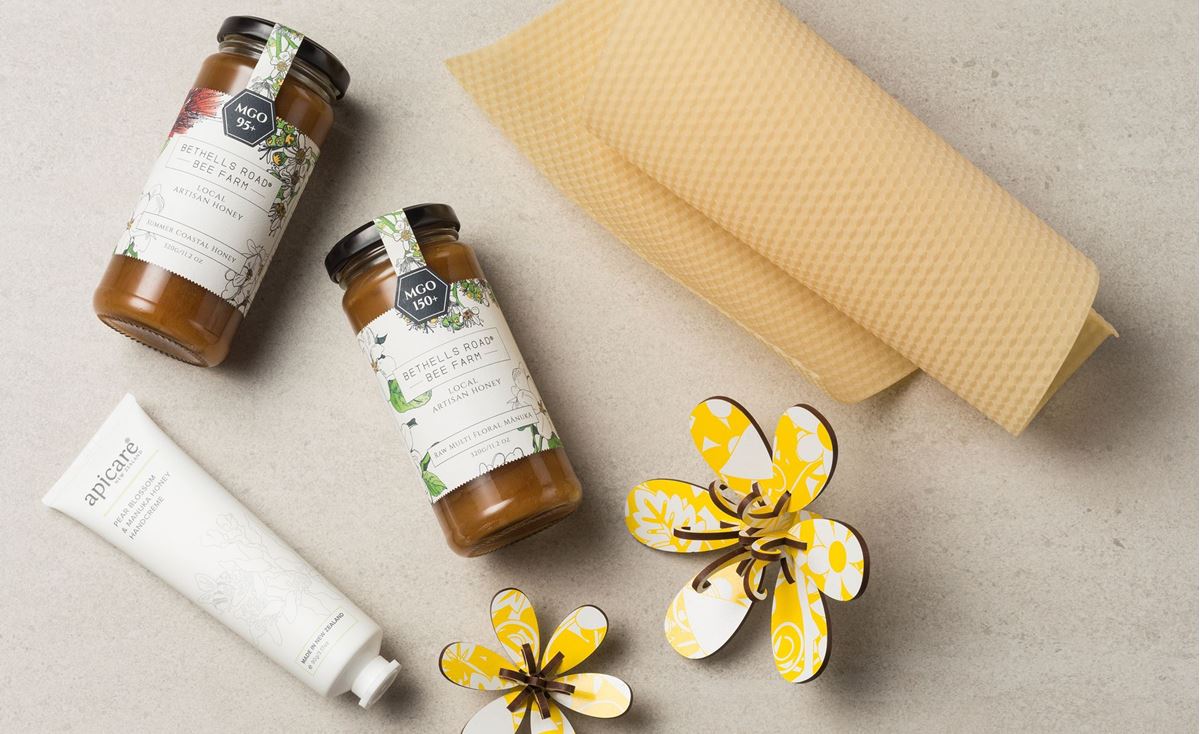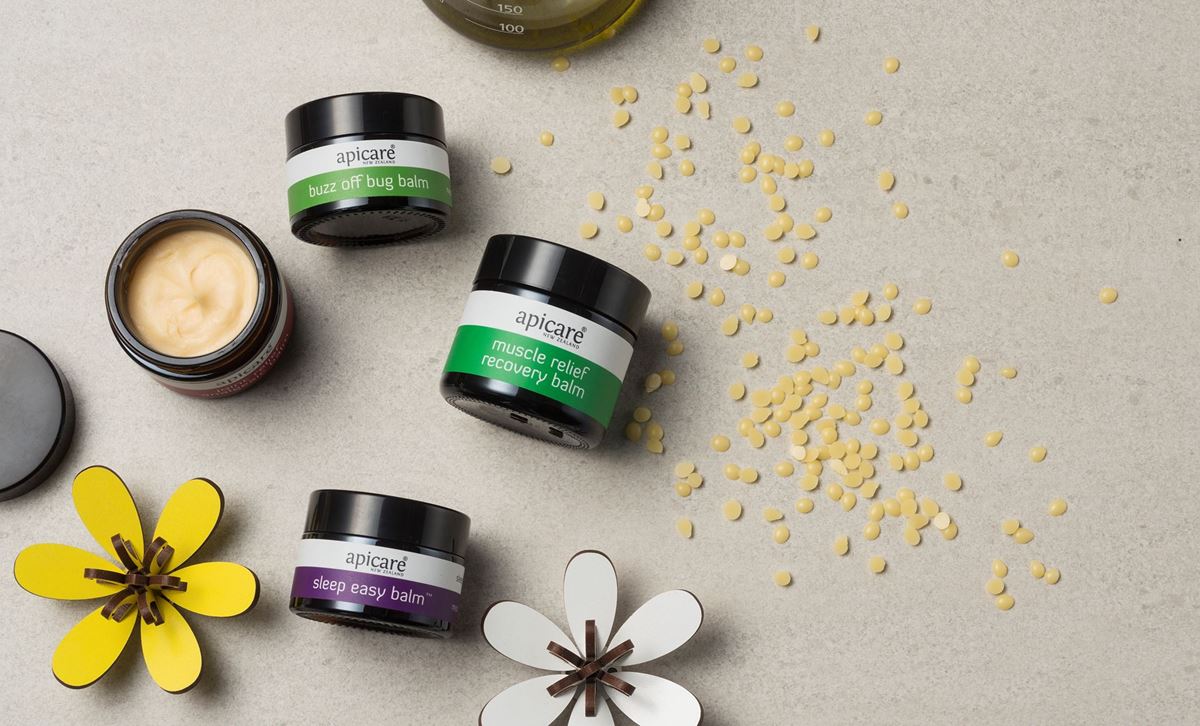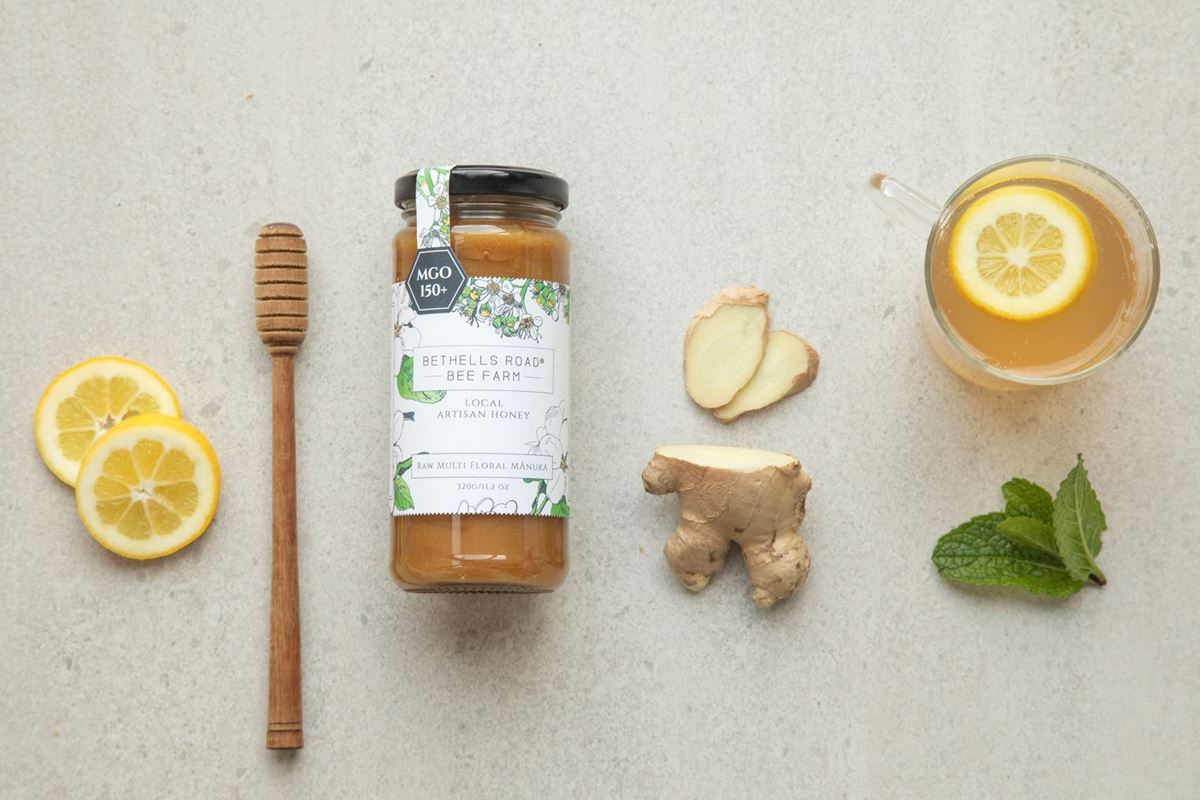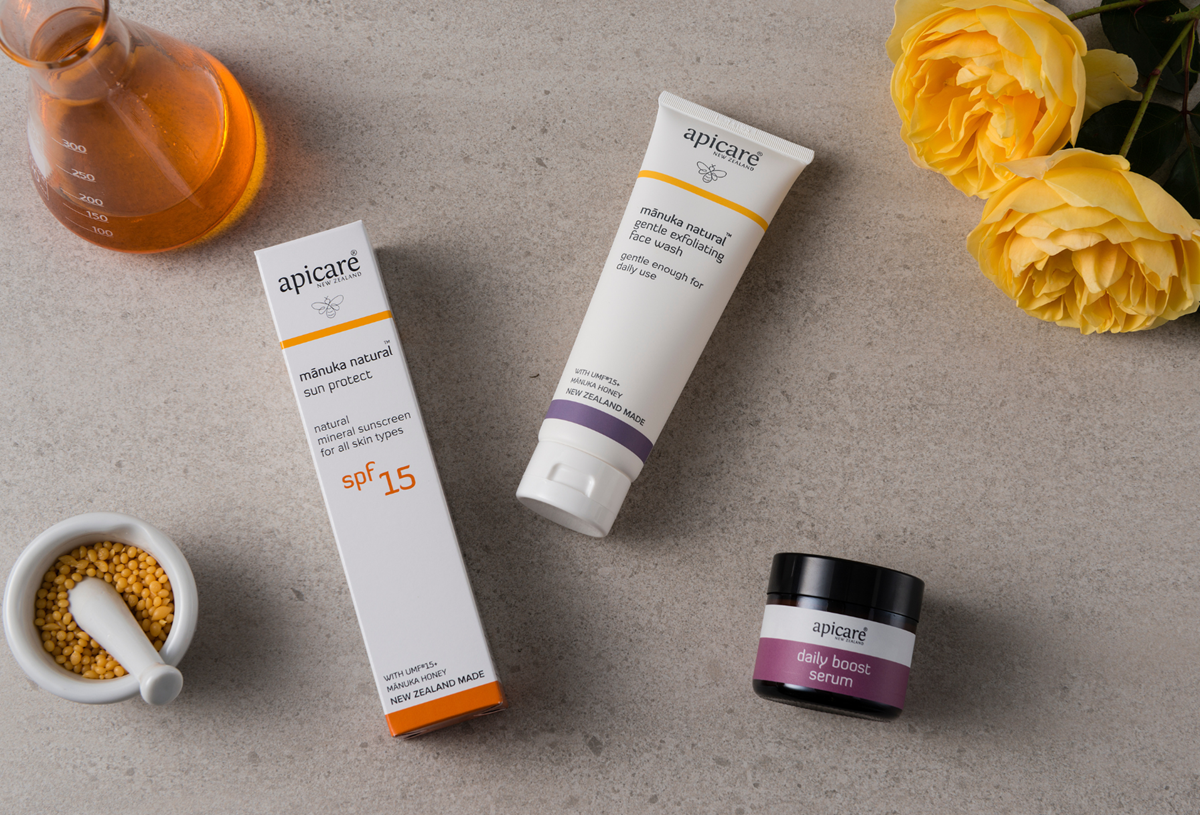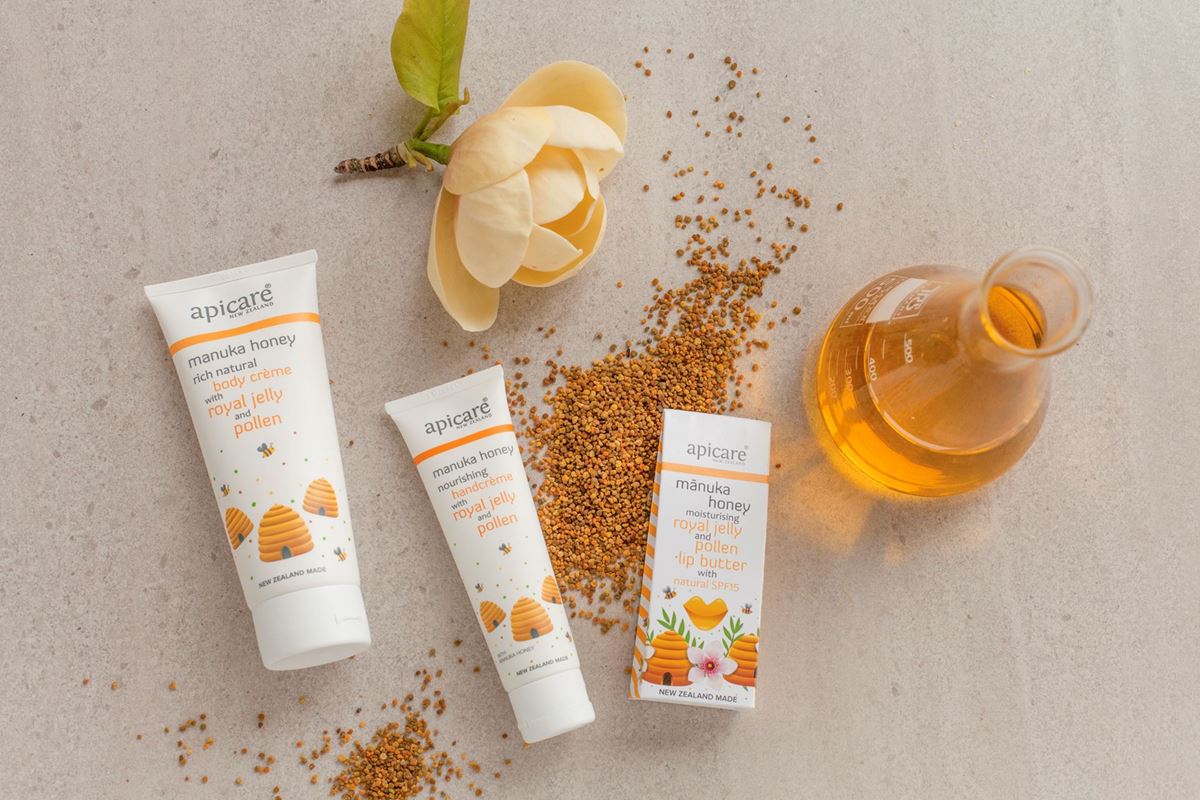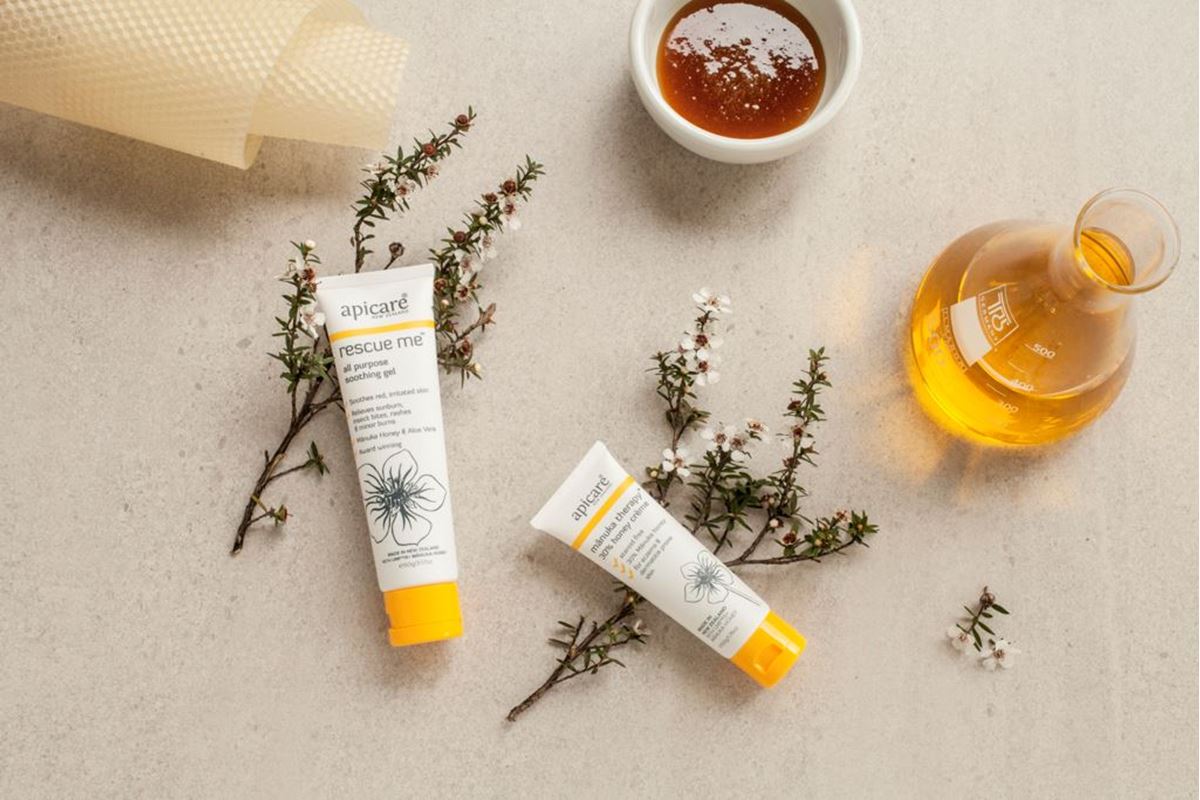Save the Honey Bee
The little honeybee is such a hard worker and at the moment honey bees all over the world are having a hard time. It has been well documented that the health and numbers of both honey bees and many native bee species are under threat. Worldwide the honeybee is under attack from bee pests, varroa mite and diseases.
In New Zealand we also now have varroa – this is a tiny mite that attaches to the honeybee, if left untreated the beehive dies out. Beekeepers worldwide use control systems that kill the mite but leaves the bee safe and protected, and the honey pure.
Overseas there is also another problem that has not reached New Zealand yet and that is Colony Collapse Disorder. The bees mysteriously desert their hive. At the moment researchers do not know exactly what causes CCD but many believe that factors contributing to the problem include viruses, mites, chemical exposure and poor nutrition from lack of pollen sources.
The honeybee is an important part of horticulture and agriculture, especially in New Zealand. About $3 billion of our GDP* is directly attributable to the intensive pollination of crops by the honeybee. Of all the food we eat a third of the calories and three-quarters of the diversity rely on bees for pollination. * source Federated Farmers
Although all of these facts and figures can make things seem overwhelming there are a number of small things that you can do at your own home to help to try and maintain bee numbers in your local environment.
What can we do?
Plant bee friendly trees and plants
If you aim to attract honeybees, you’ll need bee-friendly flowers that produce ample amounts of pollen and nectar. Most modern ornamentals, such as hybrid roses, no longer produce enough pollen and nectar to attract bees - if a blossom doesn’t provide enough pollen or nectar, bees will totally ignore it. For the best bee lures plant old-fashioned or heirloom varieties. It’s the simple blooms that are best - bees can access varieties with single petals easily, but often not the modern hybrids with double and triple petals. This means they can't access the pollen. When they are flowering leave the flowers on the plants until the blooms have gone, then deadhead or prune. The bees will make the most of each flower you leave. Ideally aim to plant a selection of plants that flower in the four different seasons, that way there are pollen sources available year-round.
Research has shown that gardens with 10 or more bee-friendly plant types host the most bee visitors. Flowers clustered into clumps of one species will attract more pollinators than individual plants scattered through the garden.
Below is a list of bee friendly plants:
Trees: Alders, Apples and crabapples, Cherries, Cotoneaster, Hazelnuts, Lime, Maples, Oaks, Orange, Peaches, Pears, Plums, Persimmons, Sycamores, Tupelos, Viburnum, Willows.
Natives under 5 meters: Lacebark (Hoheria populnea), Manuka (Leptospermum scoparium), Napaka (Hebe speciosa), NZ Flax (Phormium tenax), Three Finger (Pseudopanax colensol)
Natives 5 – 10 meters: Five Finger (Pseudopanax arboreus), Heketara (Olearia rani), Kohuhu (Pittosparum tenuifolium), Lemonwood (Pittosporum eugebioides)
Natives over 10 meters: Cabbage tree (Cordyline australis), Kanuka (Kunzea ericoides), Tawari (lxerba brexioides), Weeping Kowhai (Sophora microphylla)
Shrubs: Abelias, Butterfly bushes, Blackberries, Blueberries, Crape myrtle, Elderberries, Flowering quinces, Fuchsias, Gorse (if you are so inclined), Hebe (particularly wiri port, wiri splash, wiri vision and wiri prince), Sumacs, Wild or old fashioned roses
Perennials/annuals: Alyssum, Bee balm, Basil, Borage, Catmint, Chives, Cosmos, Globe thistles, Lambs’ ears, Lavenders, Oreganos, Pot Marigold, Sages, Salvias, Summer phlox, Carrot, Rosemary, Thymes

Provide Water
Bees need to drink too. Place a saucer of water in the garden – place pebbles or twigs and bracken in the water so the bee has something to stand and climb on to prevent it from drowning. Wet sand is another good option for providing a supply of moisture that is safe for bees to drink from. Pop it near some flowering plants and remember to replace the water on a regular basis.
General
Contact your local beekeeper's association if you see a swarm – they will send a local beekeeper out to collect it who will then look after it.
Don’t swat bees – do not squash honey bees when they land on you or you see them nearby. Unlike wasps bees can only sting once. When they do sting they die as a result, therefore they only sting as a last resort mechanism to protect against threats. If you don’t swat at bees and don’t squash them they won’t sting you.
Buy local honey to support your local beekeeping industry. Use honey in drinks, baking and cooking rather than just on toast.
Help Protect Bee Habitat
Advocate for smart growth and sensible limits to development where you live and support the planting of wildflowers and native vegetation in your local community.
SPRAY CAREFULLY
Use bee friendly sprays. Many common lawn and garden chemicals are lethal to bees, while others may weaken their immune systems, allowing parasites, disease or other stresses to finish them off. Sprays that contain neonicotinoids have repeatedly been linked to bee losses (see below). When using bee-friendly sprays, spray in the late evening once bees have gone to bed for the night.
Why neonicotinoids are bad for bees
There has been much talk about this group of insecticides globally. There are now bans and trial bans in place in many areas around the world. This is not so in New Zealand, so we need to keep a particular eye out for the ingredients we spray in our gardens and on our farms. Neonicotinoids work as an insecticide by blocking specific neural pathways in insects’ central nervous systems. At ‘sub-lethal doses’ the chemicals impair bees’ communication, homing and foraging ability, flight activity, ability to discriminate by smell, learning, and immune systems – all of which have an impact on bees' ability to survive. Neonicotinoid pesticides have been linked to the dramatic collapse in bee numbers over the last decade.
Consumer magazines have also looked into this issue for the public. Their Dec 2012/Jan 2013 article can be found here https://www.consumer.org.nz/articles/bees-and-insecticides
Domestic Sprays that contain neonicotinoids - Many domestic gardening products on sale in hardware stores and garden centers contain these chemicals. If you're buying any kind of pest control check the ingredients – anything that contains acetamiprid, imidacloprid, thiacloprid or thiamethoxam should be avoided to maximise bee health.
While the topic of bee safe sprays is relevant topic it is also one that can also be rather confusing. There are so many different garden sprays available in the market place and so many different chemical names, brand names and generic names that making a considered choice can seem impossible. We have tried to simply the issue below by providing some brand names commonly available in the New Zealand market place.
- There is evidence overseas that the use of a group of pesticides known as neonicotinoids cause bees to become disorientated when out foraging and maybe a major contributor to the phenomenon of Colony Collapse Disorder which is decimating bee populations in Europe and North America. Neonicotinoids have also been shown to cause chronic bee mortality through reduced immunity.
- Bees do not have to come in direct contact with the spray residue, they can absorb the neurotoxins via the plant's pollen and nectar.
- The common names for neonicotinoid insecticides are Acetamiprid, Clothianidin, Imidacloprid and Thiamethoxam.
- Neonicotinoids are often used for agricultural applications but can also be available to the home gardener. The two products that New Zealand gardeners are likely to come across (containing Imidacloprid) are Yates Confidor and Yates Rose Gun.
- It is not just neonicotinoids that can be harmful to bees. Other common pesticides that are toxic to them include insecticides containing Acephate, Carbaryl, Spectracide, Permethrin and the rapid flying insect killer Resmethrin, to name a few. There is an extensive list on Wikipedia under pesticide toxicity to bees.
- Sprays that are safe to bees if sprayed at dusk when the bees won’t be foraging for a number of hours (i.e. they are safe to bees as long as they are dry and no longer wet): Spinosad (Yates Success Naturalyte Insect Control), Yates Guardall, Yates Mavrik Insect & Mite Spray, Pyrethrum (Yates Nature's Way Fruit & Vegie Gun, Yates Insect Gun Ready to Use, Yates Natures Way Pyrethrum, and Neem Oil.
- Sprays that are safe to bees (though it would still be best to spray them at dawn or dusk when bees aren’t flying): Sulfur, Serenade, Insecticidal Soap Based Sprays (Yates Nature's Way Insect & Mite Spray and Yates Mite Killer), Petroleum-based oils (Yares Conqueror Spraying Oil), B.T. (bacillus thuringiensis), Herbicides (like round-up).
- There are a number of issues effecting hive health at present, not just sprays. Some of the other current issues include the varroa mite, Argentine ants and the presence of other predators such as wasps.
To make shopping at the garden centre easier we have created this small wallet-sized card. Just print it out and take it with you – it saves trying to remember too much detailed information when you’re out and about.
Last flight of the honeybee?
This article for the Guardian by Alison Benjamin delivers an informative look into the multiple factors facing the honeybee on an international level. Luckily, here in New Zealand beehives to not get moved large distances for pollination and monoculture is a not an issue, but it does highlight why colony collapse disorder may have hit the US so hard and addresses the fact that this is a multifactorial problem.
A bee-less world wouldn't just mean the end of honey - Einstein said that if the honeybee became extinct, then so would mankind. Alison Benjamin reports on a very real threat.
Dave Hackenberg's bees have been on the road for four days. To reach the almond orchards of California's Central Valley, they pass through the fertile plains of the Mississippi, huge cattle ranches and oilfields in Texas, and the dusty towns of New Mexico on their 2,600-mile journey from Florida. The bees will have seen little of the dramatic landscape, being cooped up in hives stacked four high on the back of trucks. Each truck carries close to 500 hives, tethered with strong harnesses and covered with black netting to prevent the millions of passengers from escaping. When the drivers pull over to sleep, the bees have a break from the constant movement and wind speed, but there's no opportunity to look around and stretch their wings.
Help Manage Predator Numbers
Honey bees have a number of predators that live in the local environment amongst us all.
Probably the one we see the most are wasps – particularly the Common Wasp and the German Wasp.
They will attack a beehive, steal the honey, eat the bee eggs & larvae and kill the bees. It takes up to 5 honeybees to kill one wasp. So get rid of wasps whenever you can. Wasps will die out over the winter except for the Queen wasp. She will hibernate and wake in spring looking for a nest. She is bigger than a normal wasp, so if you see a large wasp make sure you kill it. See below for a wasp eradication strategy if you suspect you have a wasp nest nearby. Wasps are more of a problem from February to March so if you can find the nest and kill them off you will be doing the bees a great favour.
A good site for information on the differences between various types of wasps is https://teara.govt.nz/en/wasps-and-bees
How to eradicate wasps:
If you can locate the nest:
Watch for the wasps, they often build their nests in areas of hollow vegetation, underground or in buildings where they have found a suitable cavity space. Look out for areas where a lot of wasps are milling around. The entrance holes are usually 3-5 cm across, you will see the wasps entering and exiting from them. Do not approach the nest site during the day unless you have protective clothing on due to the risk of being stung and injured. It is best to destroy a nest at dusk, after the worker wasps return to the nest. As night falls, they become sluggish and less aggressive, reducing the danger.
When you have found it, apply a suitable insecticide such as Carbaryl Powder or Wasp Dust directly to the nest. These powdered insecticides are available from hardware and garden stores. Follow the instructions and apply the insecticide to the entrance area where the wasps land before crawling into the nest. They eat the powder as they try to remove it from the nest entrance and die within a very short time. Within a few days you should notice the wasps disappear, if not you may need to apply a second dose a few nights later to fully eradicate the nest.
If you are allergic to wasp stings, think the nest may be very large or do not feel confident approaching a wasp nest there are professional exterminators available who can tackle the problem for you.
It is NOT a good idea to use petrol or kerosene to fumigate nests. The wasps can react violently to the fumes and launch an attack in large numbers.
Use this method if you have been unable to locate the nest.
Take one small tin of cat food - fish flavoured and mix in 2 -3 drops of Frontline flea control (the cat or dog version). To put out the bait find a tree or fence post out of the way of pets. Get a normal size can and nail it into place. Place the mix into the can and squeeze the top shut leaving just enough room for the wasps to enter (but not enough room for any other type of animal to gain access). The idea is that the wasps take the bait and go back to their nest and die. The other wasps will eat this wasp and they too will die (they are carnivorous). More frontline in the mix is not better – too much means the wasps will die before they get back to their nest. The bees will not be attracted to this mix (they are exclusive vegetarians).
Another new threat to the honeybee is the wool carder bee. This bee is new to New Zealand. It was first discovered in Napier and Nelson in 2006 and since there have been sightings of this bee in Auckland. The wool carder bee is a solitary bee about the size of a honeybee. The female is usually seen foraging but can be seen ‘carding’ fibers from plants to use as nest material - hence the name. It is very visible with its bright yellow colour. The male wool carder bee is extremely territorial and will defend the floral resources by attacking the visiting honeybees. The males have 5 sharp spines on their abdomen that are used to attack.

Argentine Ants
Argentine ants are one of the world’s most invasive species of ants. They will allow their colonies to combine, in the process creating supercolonies. They are an aggressive species that works co-operatively to attack its food source. They can overwhelm a hive in one to two days, robbing it of its honey and the pupae. They have been present in New Zealand since 1990, from which time they have become established around the country.
The Department of Conservation has a good fact sheet available on its website with nice clear images available. Here is the link to their site https://www.doc.govt.nz/nature/pests-and-threats/animal-pests/argentine-ants/
Varroa Mite

If you have hives it is very important that they are monitored and managed well to help control disease and the varroa mite. But what is the varroa mite exactly?
The Varroa Mite (Varroa Destructor) is a tiny parasitic mite just 1-1.6mm which enters the hive on adult bees. It then crawls into and takes up residence in the beeswax cells containing young bee larvae (brood cell) before they are sealed. Once in the cell the mite submerges itself into the larval food at the bottom of the cell and starts feeding. The mite will then lay its eggs (usually several females and one male) which develop into adults at about the same speed as the young bee matures. The adult mites leave the cell when the bee emerges and are able to attach to other bees. Once attached they suck the bee's haemolymph (bees version of blood) leaving open wounds and introducing various viruses including deformed wing virus. A significant mite infection can lead to the death of the hive. As a consequence, the varroa bee mite is reducing the number of bees in managed hives as well as wild native bee colonies. This has an impact not only on the beekeeping industry but also on crop pollination. Varroa mite can be treated but requires careful monitoring, hive management and rotation of mite treatments to prevent resistance developing within the mites.
Stinging: Facts vs Fears
If there is one big reason some people are reluctant to attract bees to their gardens, it can probably be summed up in one word: Ouch! We all have memories as a child of being stung by a bee and it is not a fond memory. As a result, a lot of people are afraid of being stung again. However, there are a lot of myths and unfounded fears surrounding bee stings. Did you know that only the female worker bees have stingers. Most bees will not attack if left alone so it is best not to swat at the bee. If a bee does sting it will sting only once, where as a wasp will sting many times.
What to do if you do get stung If you do get stung scrape the sting out as quickly as possible. Do not pull or squeeze out the sting as it may release more venom. Clean with soap and water. To reduce the pain, itch and swelling try the following:
If you do get stung scrape the sting out as quickly as possible. Do not pull or squeeze out the sting as it may release more venom. Clean with soap and water. To reduce the pain, itch and swelling try the following:
Ice - Ice lessons swelling by constricting vessels and reduces the flow of venom in the blood. The numbing effect soothes pain and itching.
Baking Soda - Make a baking soda paste with water and apply it to the sting. The alkaline nature of baking soda helps neutralize the acidity in the venom.
Vinegar - Vinegar is best for a wasp sting.
Toothpaste - Believe it or not, this is a great remedy that works on the same alkaline/acidity premise as baking soda.

